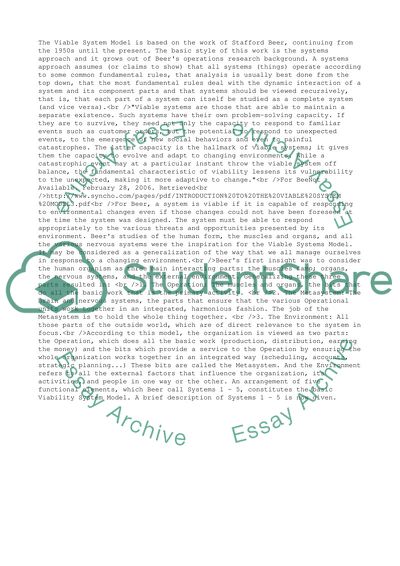Cite this document
(Viable System Model Essay Example | Topics and Well Written Essays - 1750 words, n.d.)
Viable System Model Essay Example | Topics and Well Written Essays - 1750 words. https://studentshare.org/management/1506004-beers-vsm-viable-system-model
Viable System Model Essay Example | Topics and Well Written Essays - 1750 words. https://studentshare.org/management/1506004-beers-vsm-viable-system-model
(Viable System Model Essay Example | Topics and Well Written Essays - 1750 Words)
Viable System Model Essay Example | Topics and Well Written Essays - 1750 Words. https://studentshare.org/management/1506004-beers-vsm-viable-system-model.
Viable System Model Essay Example | Topics and Well Written Essays - 1750 Words. https://studentshare.org/management/1506004-beers-vsm-viable-system-model.
“Viable System Model Essay Example | Topics and Well Written Essays - 1750 Words”. https://studentshare.org/management/1506004-beers-vsm-viable-system-model.


